


The first revenue stamp of Colombia was issued on 1 September 1858, [1] one year before the first Colombian postage stamp.



The first revenue stamp of Colombia was issued on 1 September 1858, [1] one year before the first Colombian postage stamp.
The first Colombian revenue stamp was a black 20 centavos value for the Granadine Confederation. [2] [3]
In 1861 a 20c stamp was issued inscribed Estados Unidos de Nueva Granada, or the United States of New Granada. [4]
Later in 1861 the United States of New Granada became the United States of Colombia and stamps were issued marked Estados Unidos de Colombia from 1864. [5]
The Republic of Colombia was created in 1886 and revenue stamps marked Republica de Colombia were issued from 1887. [6]
The constituent states of Colombia also issued their own revenue stamps.
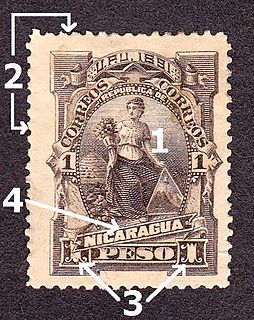
A postage stamp is a small piece of paper issued by a post office, postal administration, or other authorized vendors to customers who pay postage, who then affix the stamp to the face or address-side of any item of mail—an envelope or other postal cover —that they wish to send. The item is then processed by the postal system, where a postmark or cancellation mark—in modern usage indicating date and point of origin of mailing—is applied to the stamp and its left and right sides to prevent its reuse. The item is then delivered to its addressee.

An overprint is an additional layer of text or graphics added to the face of a postage or revenue stamp, postal stationery, banknote or ticket after it has been printed. Post offices most often use overprints for internal administrative purposes such as accounting but they are also employed in public mail. Well-recognized varieties include commemorative overprints which are produced for their public appeal and command significant interest in the field of philately.
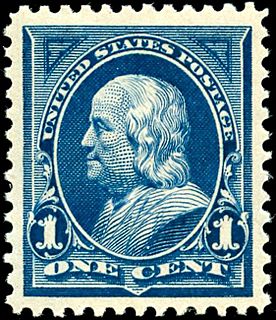
Postal service in the United States began with the delivery of stampless letters whose cost was borne by the receiving person, later encompassed pre-paid letters carried by private mail carriers and provisional post offices, and culminated in a system of universal prepayment that required all letters to bear nationally issued adhesive postage stamps.

Postage stamps and postal history of Great Britain surveys postal history from the United Kingdom and the postage stamps issued by that country and its various historical territories until the present day.
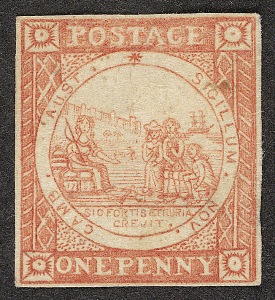
This is a survey of the postage stamps and postal history of New South Wales, a former British colony now part of Australia.

A revenue stamp, tax stamp, duty stamp or fiscal stamp is a (usually) adhesive label used to collect taxes or fees on documents, tobacco, alcoholic drinks, drugs and medicines, playing cards, hunting licenses, firearm registration, and many other things. Typically, businesses purchase the stamps from the government, and attach them to taxed items as part of putting the items on sale, or in the case of documents, as part of filling out the form.

The Mexican postal system has its roots in the Aztec system of messengers which the Spanish adopted after the Conquest. A postal service was established in 1580, mainly to communicate between the viceroyalty of New Spain with the motherland Spain. During the 18th century, Spain established a formal postal system with regular routes. In 1856, Mexico issued its first adhesive postage stamps, with "district overprints", a unique feature among postal systems worldwide, employed to protect from theft of postage stamps.

Postage stamps and postal history of the Canal Zone is a subject that covers the postal system, postage stamps used and mail sent to and from the Panama Canal Zone from 1904 up until October 1978, after the United States relinquished its authority of the Zone in compliance with the treaty it reached with Panama.

Antioquia was one of the states in the original "United States of Colombia", and is now a department in the northwest of the Republic of Colombia. Prior to the constitution of 1886, Antioquia and the other states were sovereign governments in their own right, and even afterwards retained some rights, such as the management of finances.

ABCorp is an American corporation providing contract manufacturing and related services to the authentication, payment and secure access business sectors. Its history dates back to 1795 as a secure engraver and printer, and assisting the newly formed First Bank of the United States to design and produce more counterfeit resistant currency. The company has facilities in the United States, Canada, Australia, and New Zealand. The American Bank Note Company is a wholly owned subsidiary of ABCorp.
Currency in Colombia denotes the ingots, coins, and banknotes that have been used in Colombia since 1622. It was in that year, under a licence purchased from King Philip III of Spain, that Turrillo de Yebra established a mint at Santa Fe de Bogotá and a branch mint at Cartagena de las Indias, where gold cobs were produced as part of Colombia's first currency. Silver milled coins date from 1627. In 1831, Gran Colombia dissolved into Venezuela and New Granada. In 1836, in New Granada, new monetary laws were passed, to standardise the money produced in the country. From 1861 to 1862, due to financial instability, the United States of New Granada accepted British currency, the name of the country becoming the United States of Colombia in 1862. In 1880, Colombia pegged the peso to the gold standard due to the falling price of silver. In 1886, the paper peso was introduced. In 1931, Colombia abandoned the gold standard and switched to the current form of the peso.

Colombia is a country in north-western South America. Colombia is bordered by Venezuela, Brazil, Ecuador, Peru, Panama and the Caribbean Sea and the Pacific Ocean. With a population of over 45 million people, Colombia has the second largest population in South America, after Brazil. The capital is Bogotá.
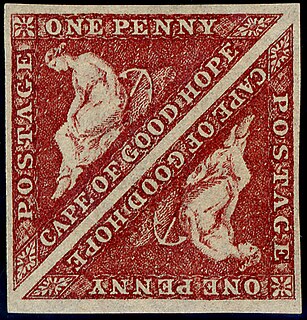
This is a survey of the postage stamps and postal history of Cape of Good Hope.

Presidents of the United States have frequently appeared on U.S. postage stamps since the mid-19th century. The United States Post Office Department released its first two postage stamps in 1847, featuring George Washington on one, and Benjamin Franklin on the other. The advent of presidents on postage stamps has been definitive to U.S. postage stamp design since the first issues were released and set the precedent that U.S. stamp designs would follow for many generations.

States of Colombia existed from February 27, 1855, in the Republic of New Granada and the Granadine Confederation, where they were called "federal states". In the United States of Colombia they were called "sovereign states".
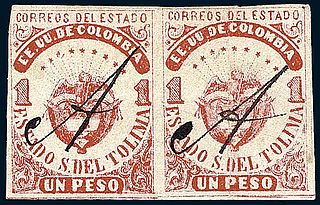
This is a survey of the postage stamps and postal history of Tolima.
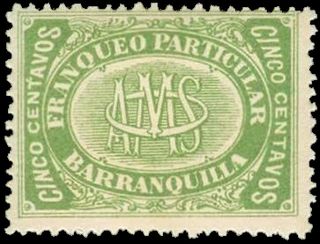
Alan D. Anyon is a British philatelist and expert in the revenue stamps of Colombia. In 2009, with Dieter Bortfeldt, he published the first dedicated catalogue of Colombian revenue stamps.
The first postage stamps marked Jersey were issued during the occupation of the island by the Germans during World War II.
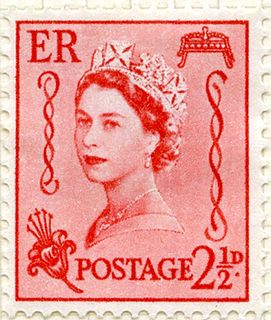
The first postal service took place using mail sent with captains of packet ships, using agents in the England and in the islands for the end delivery. The cost was normally 3d. The first pillar boxes in Britain were introduced in the Channel Islands as an experiment in 1852, to collect mail for the Royal Mail packet boats. The oldest pillar box in use in the British Isles is in Guernsey.

Dieter Bortfeldt FRPSL was a graphic designer and award-winning philatelist who was a specialist in the philately of Colombia. He designed the "Famous Colombians" and "Tourism" postage stamps of Colombia issued in 1993.